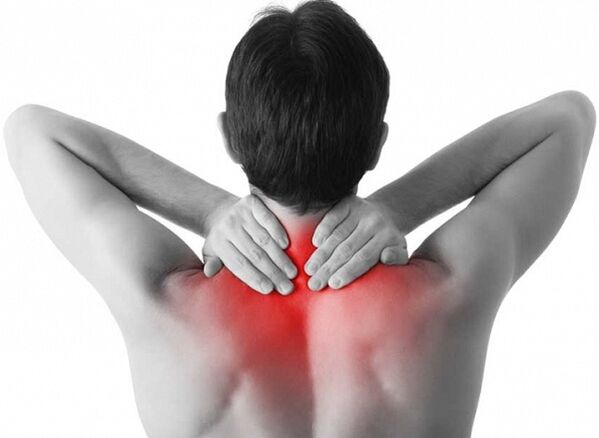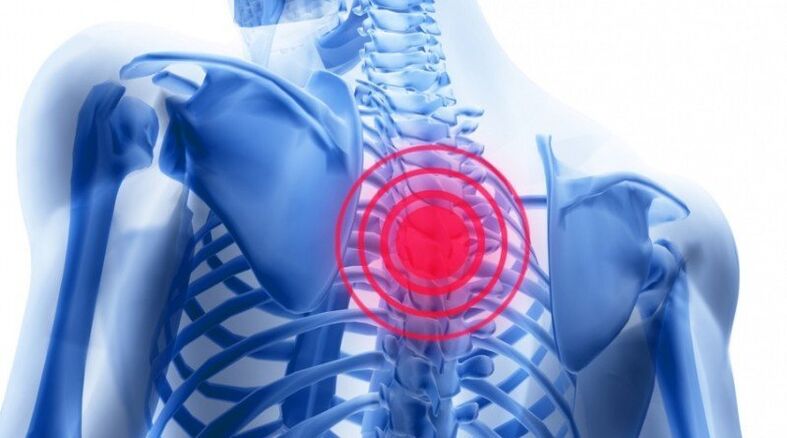Back pain affects more than 25% of the global population and more than 50% of people of working age. Unfortunately, evolution has not paid attention to ensuring that people aged 35-40 lead a comfortable life. The biomechanical structure of the spine makes it impossible to guarantee the absence of back pain, but a happy (unfortunately, temporary) coincidence. Especially now, when the body of an ordinary office worker has to sit on the computer for 8 to 12 hours. However, we have adapted to a completely different and more active lifestyle during millions of years of evolution in the wild!

Can I treat spinal pain alone?
Unfortunately, not everyone is asking themselves this very correct question. The answer is this: self-medication based on Internet information is very dangerous. This is a huge risk and can lead to disability. If we are talking about internal pain such as back and spine pain, then there is no need to "diagnose" ourselves and "prescribe" treatment. The nerve endings of the internal organs are different from the surface of the skin. Internal pain is difficult to locate. Sometimes it seems to be one pain, but in fact the cause is another. Suppose that back pain may be caused by gastrointestinal cancer. The pain that another person may describe in a forum or article that is very similar to yours may be caused by a completely different reason and requires a fundamentally different treatment.
Yoram Anekstein of Tel Aviv Medical Center: "Very important advice: Don’t try to learn the names of spine diseases, their etiology, diagnosis, etc. Spondyloarthritis, shoulder ia periosteal disease, cervical and arm pain-all these terms are not for youUse. There are dozens of such diseases in the textbooks of medical universities, and there are even various explanations and modifiers. When a qualified doctor makes a diagnosis, you should know and remember the name of the diagnosis. But it is not too early.
Shocking symptoms
Unpleasant feelings most often occur in the cervical and lumbar spine, but chest pain is much less common. It bears less pressure, so osteochondrosis, herniation and disc herniation are rarely affected. However, chest and chest back pain is most likely caused by spinal problems.

There are occasional unpleasant feelings, but it is usually not dangerous. If it is muscle pain (although it may not be like a hard-working arm muscle pain and feels more severe), the cause is likely to be overwork caused by staying in one position for a long time or being overloaded. If the pain disappears and does not go away after changing posture or a short walk, the problem may not be serious. Although it is necessary to solve some small problems, for example, change the usual posture, increase physical exercise and perform physical exercises. And only a doctor can determine the severity of the problem. If there are few chances, then you should definitely see a doctor: it is always easier (and cheaper) to cure the disease early than in advanced cases.
What is really dangerous? This is a list of "alarms", even if one of them occurs, diagnosis and treatment must be started as soon as possible:
- The pain will not stop, the change of body posture will not help; rest will not relieve the pain; the pain will increase at night
- Numbness (decreased sensitivity) or decreased strength of limbs;
- Problems with urination and defecation (for example, loss of the feeling of emptying the bladder; urinary incontinence and fecal incontinence, and vice versa, delay; not to be confused with constipation);
- The temperature is rising, and there is no other reason to explain this, such as SARS;
- Wake up with pain, interrupt sleep;
- Complications after delayed malignancy (timeliness does not matter);
- Unexplainable weight loss;
- Complications after taking steroids for many years;
- Complications after recent serious illness;
- Complications after recent infectious diseases;
- Loss of anal reflex;
- Weakness in hips and knees;
- Neurological deficit
- Progressive deformity of the spine;
- Back pain worsens during rest;
- Chest pain (ACS-ECG);
- General discomfort.
Note that you don’t have to wait for everything to start together. If any of these symptoms occur, seek medical attention immediately.
Yoram Anekstein of Tel Aviv Medical Center: "The question often arises: I have an appointment with a doctor, but my back has stopped hurting. Should I go or shouldn't I? Must go.
Articles on the Internet often try to describe which types of pain are characteristic of osteochondrosis and which are sciatica. This is the wrong approach, and we have explained the reason above. The type of pain does not matter: left, right, in the tailbone, everywhere, shooting, lasting for a few seconds or hours and days. All these symptoms indicate the need for qualified medical care.
Causes of back pain
The most common cause is nonspecific pain associated with muscle strain, tendons, ligaments, and fascia overextension.

The pain is mostly related to the herniated disc that affects the nerve root (accounting for about 3% of cases).
Osteoporosis (including fractures), infections (spinal discitis), tumors, tuberculosis, trauma and other rheumatism cause pain much less frequently (about 1%).
Visceral diseases can also cause back pain (such as pancreatic cancer, peptic ulcer, or acute coronary syndrome).
Degenerative changes, called osteochondrosis, are composed of complex components (decreased elasticity and strength of intervertebral disc material, decreased intervertebral disc height, herniation, hernia, vertebral changes (Modic I-III), ligaments (spondylopathy), smallJoints (spondyloarthropathy) are not directly related to pain and other clinical manifestations.
It should be understood that only the group of spondylitis and spondyloarthritis includes more than a dozen diseases, which have various causes, course characteristics, symptoms, and the like. Especially the number of back and spine diseases is very high. But from the above description, you can understand that they are united by earnestness. Back pain cannot be ignored. Many of these diseases progress slowly and have a longer period of remission. But at the same time, in each acute stage, the risk of complications (up to complete loss of mobility) increases.




























